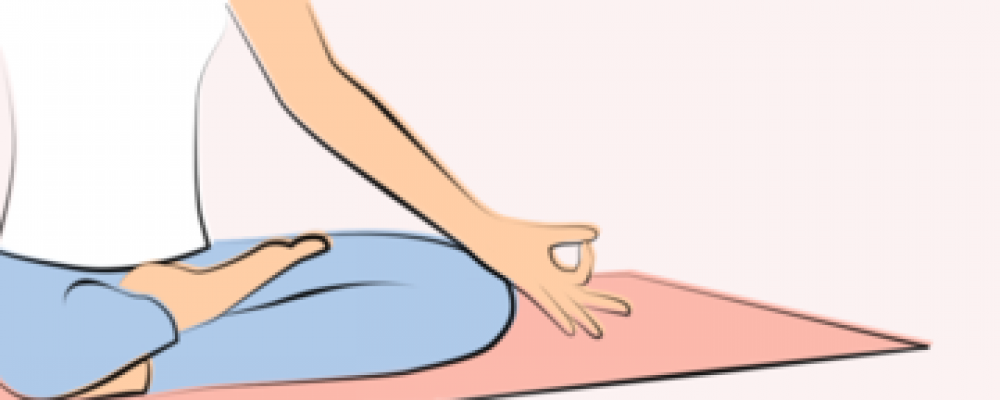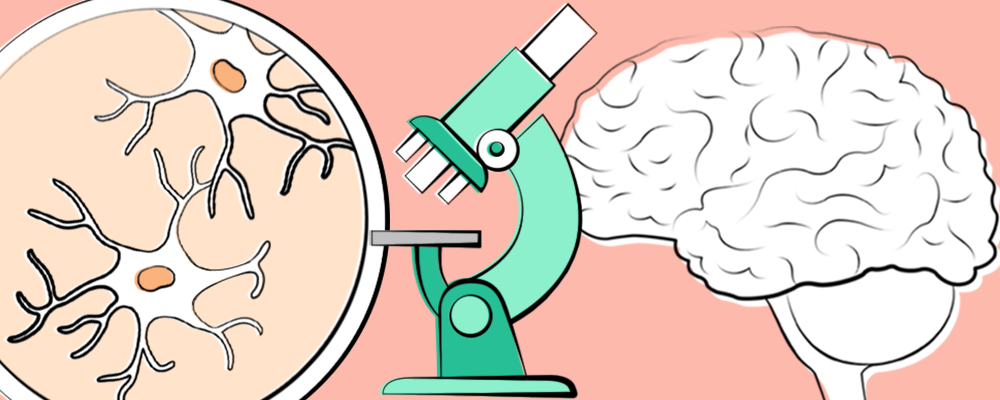Pharmaceutical treatments are typically used to treat migraines, but there are other things you can do to help alleviate pain and other symptoms.
For starters, holistic techniques might prove helpful for some people. After all, yoga, biofeedback and other relaxation exercises can be transformative in dealing with stress — which, for many, is a major trigger for migraines.
Yoga for migraine prevention
Yoga is a mind and body therapy that began in ancient India. Today, its popularity has spread across the world, and there are many, many forms to practise. Amongst other health benefits, yoga has also been highlighted as a drug-free way to treat migraine pain — by relaxing the body and the mind together, your migraines may disappear almost completely.
If you’re new to yoga, it’s best if you start with gentle meditative exercises that focus on breathing and relaxation. Hatha yoga, for example, which can involve holding seated poses for a few minutes at a time, is a good choice for migraine sufferers.
How does it help stop migraines?
Staying relaxed and combating stress can make you less prone to migraines because when you relax, and particularly when you breathe deeply, you stimulate your vagus nerve.
Your vagus nerve is part of your autonomic nervous system, which controls your unconscious body functions (heart rate, blood pressure, etc.). When your vagus nerve is stimulated, your heart rate and blood pressure drop. This is an important step towards recovering from stress.
Can massage prevent migraines, too?
If stress-busting is so important for managing migraines, it’s possible that less active forms of relaxation might help as well. Massage is used by many to relieve stress, pain, and tension, but it’s costly and — to be honest — there is limited research to support its effectiveness in terms of migraine management.
Essentially, it’s something of a personal choice as to whether you use it to manage your migraines. It might work better for some people than others.
Another thing you might consider is learning how to perform self-massage using acupressure points. If this appeals to you, talk to a therapist about using it as a way to help deal with symptoms when they occur.
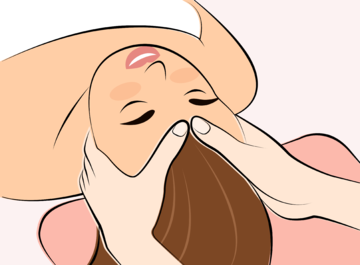
What is biofeedback and how can it help reduce migraines?
Where you can practise yoga and acupressure from the comfort of your own home, you’ll need to make an appointment with a biofeedback therapist if you want to try this form of holistic migraine treatment.
During a biofeedback session, sensors are attached to your body that send signals to a monitor, capturing your heart and breathing rates, blood pressure, skin temperature, sweating, and muscle activity — indicated by sounds, lights, or images.
How does it help stop migraines?
Biofeedback is used to regain control over unconscious body functions, moderated by your autonomic nervous system. In some ways, it’s similar to yoga which also uses physical poses and breathing exercises to achieve similar results.
When you are stressed, you can see how your body responds via the biofeedback monitor — you can watch your heart rate and blood pressure rise, for example, or your skin temperature increase. You can also see, in real-time, the effects of your efforts to halt these responses by consciously relaxing.
Conscious relaxation is achieved using exercises like deep breathing or progressive muscle relaxation, which we will cover more of below. The therapist may also help you use guided imagery or mindfulness meditation.
As you perform an exercise, you can see on the monitor what effect it has on your body. In this way, you learn to understand how your body responds to both stress and relaxation. The more familiar you are with how your body works, the more control you can have over your reactions.
You may choose, after some guided sessions, to do biofeedback on your own. If you’re comfortable analyzing responses, it’s possible to purchase a biofeedback sensor to use with your own laptop or computer.
5 yoga poses and relaxation techniques to try for migraine relief
So far, we’ve talked mostly about how to reduce the number of migraine attacks you have by using regular relaxation techniques. But what if you already have a migraine?
Good news: you can use these relaxation exercises for migraine relief too!
1. Child's Pose
As a resting pose, Child’s Pose will allow your whole body to relax — alleviating pain as a result. To do this, put your knees on the floor with your big toes together and sit on your heels. Separate your knees and lean your upper body forward between your thighs, resting your forehead on the floor, on stacked fists, or on a cushion.
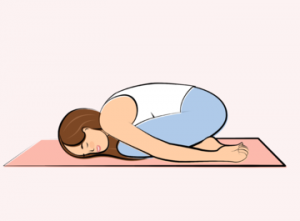
2. Bridge Pose
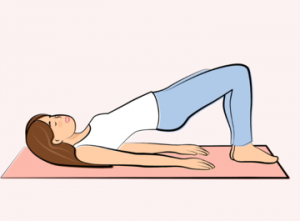
This yoga pose can help open your chest and relieve any tension you’re carrying. To start, lie on your back with your knees bent. Keep your arms extended beside you, palms facing down. Pressing into your feet and arms, lift your tailbone up, holding your buttocks off the floor. The less tension in your body, the less your head should hurt.
3. Downward Facing Dog
This pose can increase the circulation to your brain — ideal for when an attack starts to take hold. Starting from your hands and knees, slowly lift your knees away from the floor and gently straighten your legs as much as is comfortable. Then, subtly stretch your heels towards the floor, but don’t force it.

4. Corpse Pose

This is a pose used for deep rest (hence the name!). Lie on your back with your weight evenly distributed across your pelvis and shoulder blades, allowing your legs to relax with your feet turned outwards. You may want a thin cushion under your head and neck, or a blanket to cover you.
5. Breathing exercises
Long, slow exhalations are a simple and effective way to promote relaxation. Some yoga exercises can help you bring awareness to your breathing, such as ‘sama vritti’ (Sanskrit for ‘equal ratio breath’).
Inhale for as long as feels comfortable, hold for a second, and then exhale for the same length of time. A nice place to start is to count 5 as you inhale, 1 as you hold, and 5 as you exhale. As you get more familiar with the practise, you may want to extend the times slightly — but never leave yourself feeling short of breath or lightheaded.
A word of caution…
The best way to learn yoga poses is with a qualified instructor, who can help you get the most from your practice while avoiding injury. They will also be able to advise you of situations where yoga may not be right for you.
Certain poses and exercises are not advisable during pregnancy or with some medical conditions, for example. As we always say: you should speak with your doctor, yoga practitioner or therapist to discuss your own individual symptoms in order to develop your personal pathway to migraine relief.
